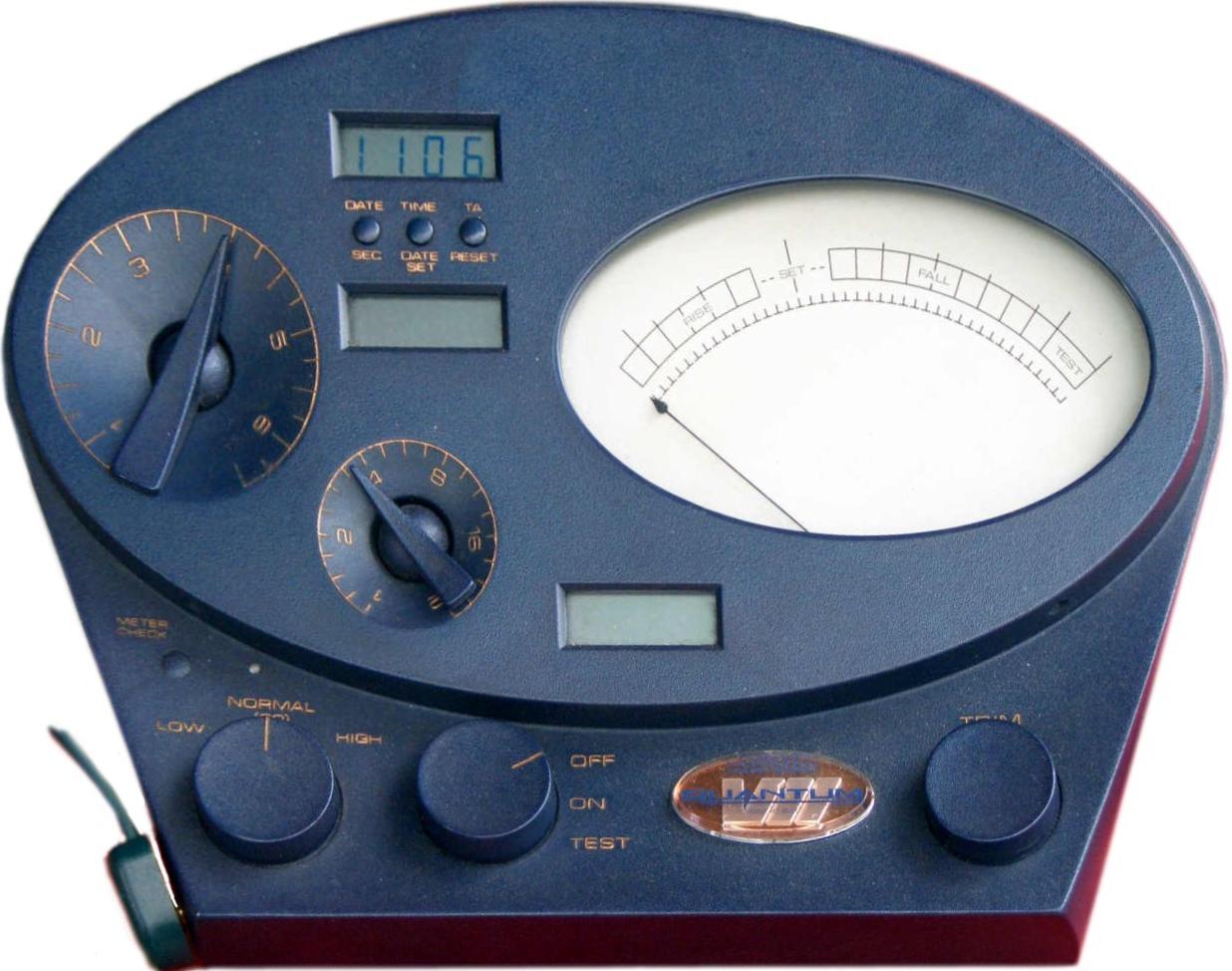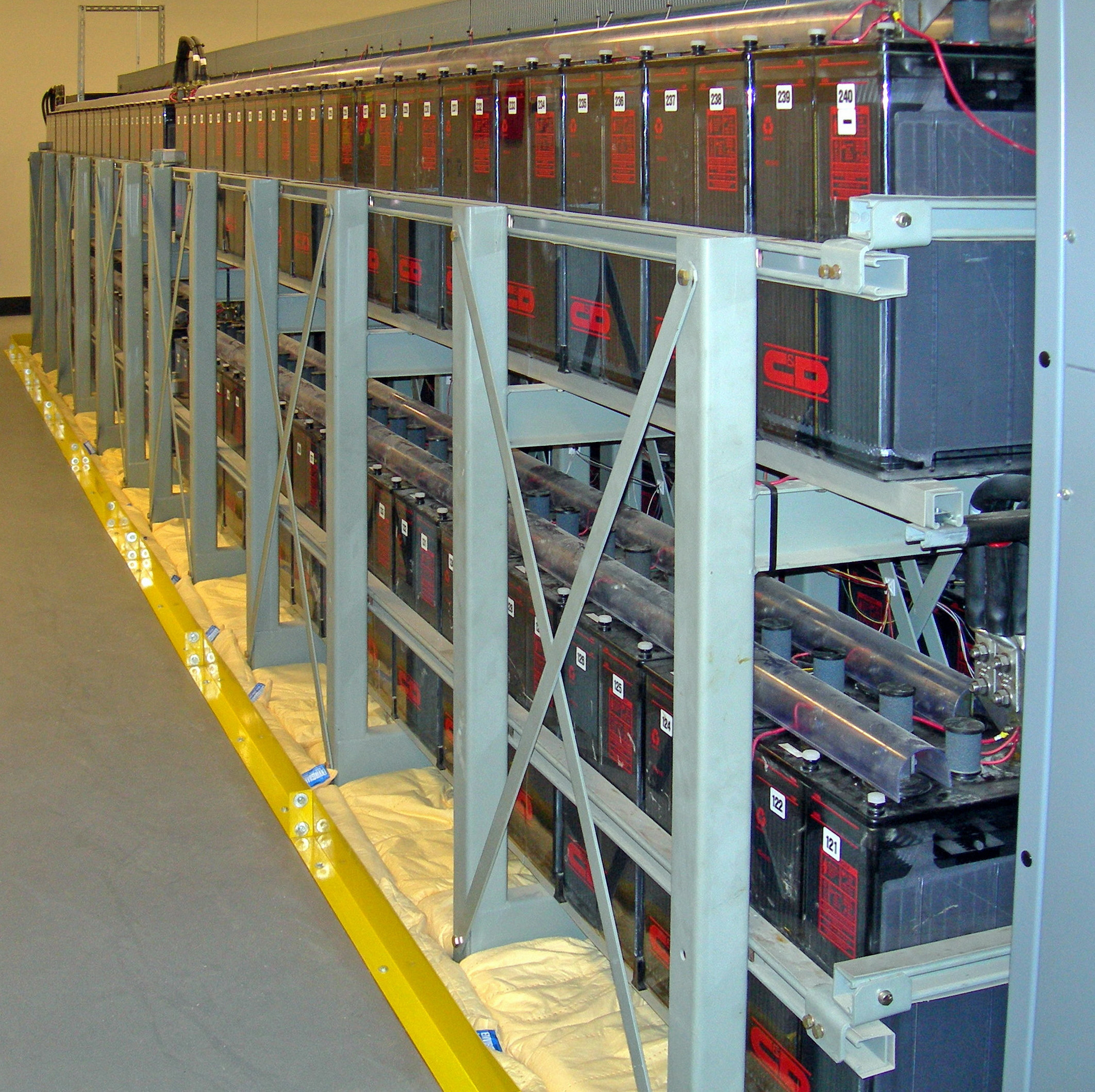|
Electropsychometer
The E-meter, originally the electropsychometer, is an electronic device for displaying the electrodermal activity (EDA) of a human being. It is used for auditing in Scientology and divergent groups. The efficacy and legitimacy of Scientology's use of the E-meter has been subject to extensive litigation and in accordance with a federal court order, the Church of Scientology publishes disclaimers declaring that the E-meter "by itself does nothing," is incapable of improving health, and is used specifically for spiritual purposes. Such devices have been used as research tools in many human studies, and as one of several components of the Leonarde Keeler's polygraph (lie detector) system, which has been widely criticized as ineffective and pseudoscientific by legal experts and psychologists. History Electrodermal activity (EDA) is the changing electrical charges observed on the surface of the skin. EDA meters were first developed in 1889 in Russia, and psychotherapists began using ... [...More Info...] [...Related Items...] OR: [Wikipedia] [Google] [Baidu] |
Volney Mathison
Volney G. Mathison, also known by the pseudonym Dex Volney (August 13, 1897 – January 3, 1965), was an American chiropractor, writer, and inventor of the first E-meter used by the Church of Scientology. Family In 1935, Mathison was married to Jean Darrell, a music librarian for NBC. She died in November 1964. Career Writer In 1921, Mathison wrote the fictional short story "A Phony Phone", which was published in ''Radio News'' edited by Hugo Gernsback. In 1924, he wrote the fictional book ''The Radiobuster: Being Some of the Adventures of Samuel Jones, Deep Sea Wireless Operator''. The book is listed in ''American Fiction, 1901-1925: A Bibliography''. Mathison's story "The Death Bottle" was published in ''Weird Tales'' in March 1925. He also wrote stories which were published under the pseudonym of "Dex Volney". His pieces as "Dex Volney" were of the Western (genre), Western genre, and set in Alaska. According to ''Science-Fiction: The Gernsback Years'', Mathison was "a pr ... [...More Info...] [...Related Items...] OR: [Wikipedia] [Google] [Baidu] |
Auditing (Scientology)
In Dianetics and Scientology, auditing is a process whereby the "auditor" takes an individual through times in their current or past lives with the ostensible purpose of ridding the individual of negative influences from past events or behaviors. Auditing is meant to bring the individual to " Clear" status; thus, an individual being audited is known as a "preclear" or PC. Auditing was invented by L. Ron Hubbard as an integral part of Dianetics, first introduced in 1950. In 1951, auditing also became a core practice of Scientology. The E-meter, a device to measure electrodermal activity, became an integral part of auditing in scientology. According to the Church of Scientology, "one formal definition of auditing is the action of asking a person a question (which he can understand and answer), getting an answer to that question and acknowledging him or her for that answer". Hubbard claimed auditing provided many benefits including unsupported medical and psychological health effec ... [...More Info...] [...Related Items...] OR: [Wikipedia] [Google] [Baidu] |
Mark VIII E-Meter
Mark may refer to: Currency * Bosnia and Herzegovina convertible mark, the currency of Bosnia and Herzegovina * East German mark, the currency of the German Democratic Republic * Estonian mark, the currency of Estonia between 1918 and 1927 * Finnish markka ( sv, finsk mark, links=no), the currency of Finland from 1860 until 28 February 2002 * Mark (currency), a currency or unit of account in many nations * Polish mark ( pl, marka polska, links=no), the currency of the Kingdom of Poland and of the Republic of Poland between 1917 and 1924 German * Deutsche Mark, the official currency of West Germany from 1948 until 1990 and later the unified Germany from 1990 until 2002 * German gold mark, the currency used in the German Empire from 1873 to 1914 * German Papiermark, the German currency from 4 August 1914 * German rentenmark, a currency issued on 15 November 1923 to stop the hyperinflation of 1922 and 1923 in Weimar Germany * Lodz Ghetto mark, a special currency for Lodz Ghetto. * R ... [...More Info...] [...Related Items...] OR: [Wikipedia] [Google] [Baidu] |
Pseudoscience
Pseudoscience consists of statements, beliefs, or practices that claim to be both scientific and factual but are incompatible with the scientific method. Pseudoscience is often characterized by contradictory, exaggerated or unfalsifiable claims; reliance on confirmation bias rather than rigorous attempts at refutation; lack of openness to evaluation by other experts; absence of systematic practices when developing hypotheses; and continued adherence long after the pseudoscientific hypotheses have been experimentally discredited. The demarcation between science and pseudoscience has scientific, philosophical, and political implications. Philosophers debate the nature of science and the general criteria for drawing the line between scientific theories and pseudoscientific beliefs, but there is general agreement on examples such as ancient astronauts, climate change denial, dowsing, evolution denial, Holocaust denialism, astrology, alchemy, alternative medicine, occultism, ... [...More Info...] [...Related Items...] OR: [Wikipedia] [Google] [Baidu] |
Ronald DeWolf
Ronald Edward "Ron" DeWolf (born Lafayette Ronald Hubbard Jr.; May 7, 1934 – September 16, 1991), also known as "Nibs" Hubbard, was the eldest child of Scientology's founder L. Ron Hubbard by his first wife Margaret Louise Grubb, and highly critical of his father and of the Church of Scientology. Early life In his 1983 interview with ''Penthouse'' magazine, DeWolf said he was born prematurely at after surviving an early abortion attempt; his father constructed a makeshift incubator with a shoe box, later a cupboard drawer, some rubbers, and used blankets and an electric light bulb to keep the baby warm. Relationship with his father Hubbard, Jr. claimed to have helped his father in the early days of Scientology but later rejected his father and Scientology, quitting in 1959 and changing his name to Ronald DeWolf. On November 6, 1982, in a Riverside, California, court, DeWolf sued for control of his father's estate, saying that his father was either deceased or incompeten ... [...More Info...] [...Related Items...] OR: [Wikipedia] [Google] [Baidu] |
Mark V E-meter
Mark may refer to: Currency * Bosnia and Herzegovina convertible mark, the currency of Bosnia and Herzegovina * East German mark, the currency of the German Democratic Republic * Estonian mark, the currency of Estonia between 1918 and 1927 * Finnish markka ( sv, finsk mark, links=no), the currency of Finland from 1860 until 28 February 2002 * Mark (currency), a currency or unit of account in many nations * Polish mark ( pl, marka polska, links=no), the currency of the Kingdom of Poland and of the Republic of Poland between 1917 and 1924 German * Deutsche Mark, the official currency of West Germany from 1948 until 1990 and later the unified Germany from 1990 until 2002 * German gold mark, the currency used in the German Empire from 1873 to 1914 * German Papiermark, the German currency from 4 August 1914 * German rentenmark, a currency issued on 15 November 1923 to stop the hyperinflation of 1922 and 1923 in Weimar Germany * Lodz Ghetto mark, a special currency for Lodz Ghetto. * R ... [...More Info...] [...Related Items...] OR: [Wikipedia] [Google] [Baidu] |
Mains Electricity
Mains electricity or utility power, power grid, domestic power, and wall power, or in some parts of Canada as hydro, is a general-purpose Alternating current, alternating-current (AC) electric power supply. It is the form of electrical power that is delivered to homes and businesses through the electric grid in many parts of the world. People use this electricity to power everyday items—such as domestic appliances, televisions and lamps—by plugging them into a wall outlet. The voltage and utility frequency, frequency of electric power differs between regions. In much of the world, a voltage (nominally) of 230 volts and frequency of 50 Hz is used. In North America, the most common combination is 120 V and a frequency of 60 Hz. Other combinations exist, for example, 230 V at 60 Hz. Travellers' portable appliances may be inoperative or damaged by foreign electrical supplies. Non-interchangeable AC power plugs and sockets, plugs and sockets in differen ... [...More Info...] [...Related Items...] OR: [Wikipedia] [Google] [Baidu] |
Rechargeable Battery
A rechargeable battery, storage battery, or secondary cell (formally a type of energy accumulator), is a type of electrical battery which can be charged, discharged into a load, and recharged many times, as opposed to a disposable or primary battery, which is supplied fully charged and discarded after use. It is composed of one or more electrochemical cells. The term "accumulator" is used as it accumulates and stores energy through a reversible electrochemical reaction. Rechargeable batteries are produced in many different shapes and sizes, ranging from button cells to megawatt systems connected to stabilize an electrical distribution network. Several different combinations of electrode materials and electrolytes are used, including lead–acid, zinc–air, nickel–cadmium (NiCd), nickel–metal hydride (NiMH), lithium-ion (Li-ion), lithium iron phosphate (LiFePO4), and lithium-ion polymer (Li-ion polymer). Rechargeable batteries typically initially cost more ... [...More Info...] [...Related Items...] OR: [Wikipedia] [Google] [Baidu] |
Vacuum Tubes
A vacuum tube, electron tube, valve (British usage), or tube (North America), is a device that controls electric current flow in a high vacuum between electrodes to which an electric potential difference has been applied. The type known as a thermionic tube or thermionic valve utilizes thermionic emission of electrons from a hot cathode for fundamental electronic functions such as signal amplification and current rectification. Non-thermionic types such as a vacuum phototube, however, achieve electron emission through the photoelectric effect, and are used for such purposes as the detection of light intensities. In both types, the electrons are accelerated from the cathode to the anode by the electric field in the tube. The simplest vacuum tube, the diode (i.e. Fleming valve), invented in 1904 by John Ambrose Fleming, contains only a heated electron-emitting cathode and an anode. Electrons can only flow in one direction through the device—from the cathode to the ... [...More Info...] [...Related Items...] OR: [Wikipedia] [Google] [Baidu] |
Transistors
upright=1.4, gate (G), body (B), source (S) and drain (D) terminals. The gate is separated from the body by an insulating layer (pink). A transistor is a semiconductor device used to Electronic amplifier, amplify or electronic switch, switch electrical signals and electrical power, power. The transistor is one of the basic building blocks of modern electronics. It is composed of semiconductor material, usually with at least three terminals for connection to an electronic circuit. A voltage or current applied to one pair of the transistor's terminals controls the current through another pair of terminals. Because the controlled (output) power can be higher than the controlling (input) power, a transistor can amplify a signal. Some transistors are packaged individually, but many more are found embedded in integrated circuits. Austro-Hungarian physicist Julius Edgar Lilienfeld proposed the concept of a field-effect transistor in 1926, but it was not possible to actually constr ... [...More Info...] [...Related Items...] OR: [Wikipedia] [Google] [Baidu] |
Hubbard Association Of Scientologists International
The Hubbard Association of Scientologists (HAS) was the original corporation founded in 1952 by L. Ron Hubbard that managed all Scientology organizations. The HAS evolved from the Office of L. Ron Hubbard located in Phoenix, Arizona. It was re-incorporated later in the year as the Hubbard Association of Scientologists International (HASI) to correct the non-profit status omission in the corporate paperwork. HASI general members would receive 10% discount on all books, tape lectures and other items from Church bookstores. HASI membership was a requirement to take services at the various Scientology organizations. HASI was the sole membership organization for the Church of Scientology prior to October 1984, when the International Association of Scientologists Scientology is a set of beliefs and practices invented by American author L. Ron Hubbard, and an associated movement. It has been variously defined as a cult, a business, or a new religious movement. The most recent p ... [...More Info...] [...Related Items...] OR: [Wikipedia] [Google] [Baidu] |


.png)


.jpg)